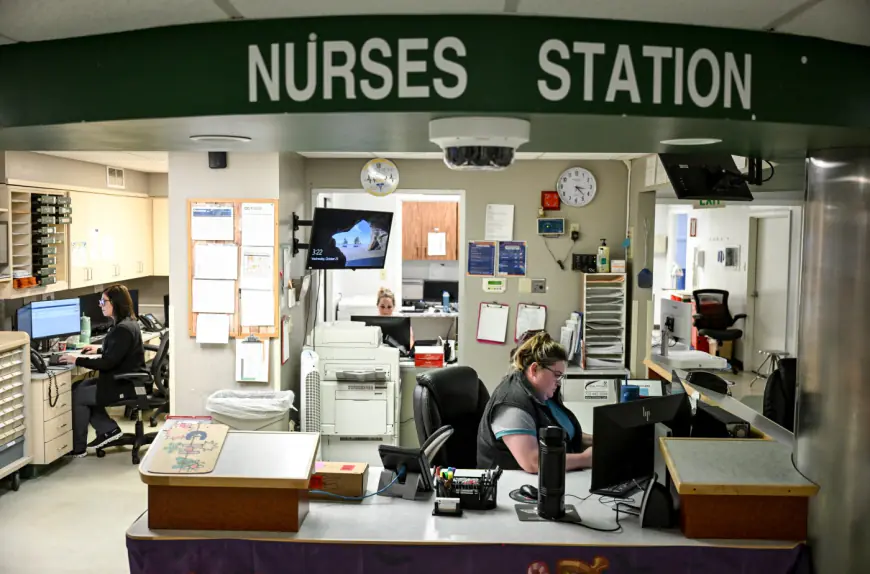Colorado’s rural hospitals need hundreds of millions of dollars in upgrades — and have no easy way to fund the work
Nationwide, 104 hospitals in rural areas have closed since 2005, and hundreds limited their services. While 16 hospitals in Colorado limited their services, none have closed.

Colorado’s rural hospitals have hundreds of millions of dollars in deferred maintenance and other projects and, in most cases, no way to get enough upfront cash to complete them.
One of the state’s senators is working on a bill to give them more access to loans, but Congress isn’t likely to take it up until next year at the earliest.
The Colorado Hospital Association doesn’t track how much capital investment hospitals need, but a survey of 25 rural facilities conducted earlier this year found they had identified $467 million in projects, including upgrading their technology, constructing or renovating buildings, and buying major equipment, president and CEO Jeff Tieman said.

A group of rural hospitals working together to propose state and federal changes that would stabilize their finances commissioned a study that found Colorado’s rural facilities needed at least a combined $600 million in capital upgrades, said Kevin Stansbury, CEO of Lincoln Health in Hugo.
The total could be twice that much if the goal is for rural facilities to be on par with urban ones, he said.
Not all small hospitals have lines of credit with banks, and those that do may need to keep them open in case something interferes with an urgent need, such as making payroll, Tieman said. Some federal and state grants support rural hospitals, but those typically wouldn’t cover construction, he said.
“They’re dealing with constrained resources,” he said. “They just have to make choices.”
Rural hospitals have slim profit margins, if they aren’t losing money, so they can’t reinvest their own funds or get bank loans, said Aidan Hettler, CEO of Sedgwick County Health Center in Julesburg.
Without the ability to upgrade their facilities, they can’t offer new services that would convince more patients to get their care locally or may have to drop existing ones, even if those services made money, he said.
“It can be kind of a vicious cycle,” he said.
The proposed Hospital Revitalization Act, backed by Colorado Democratic Sen. Michael Bennet and Kansas Republican Sen. Jerry Moran, would allow the U.S. Department of Agriculture to make loans to hospitals in counties with no more than 25,000 people, if they are at least 35 miles from the next-nearest hospital and have operated for 30 years or longer.
Facilities in “mountainous terrain,” which the bill doesn’t define, would have to be only 15 miles from another hospital.
The hospitals would have to explain how the renovations would help them remain open, and attest that they haven’t made any significant upgrades in the previous 10 years. They would repay the loans over 40 years or the life of the facility.

The hospitals wouldn’t have to pay interest for the first five years of the loan, after which they would start paying the USDA’s rate, which varies based on when they took out the loan, how long they have to repay it and other factors.
Bennet and Moran plan to introduce the bill this year, though it isn’t likely to pass while Congress is preoccupied with elections and the possibility of a government shutdown in late December.
Assuming it doesn’t move forward as part of a package of must-pass bills, they would have to introduce it again after a new session of Congress takes its seats early next year. Representatives for Bennet didn’t respond to questions about the proposed bill.
While hospitals would still have to show some financial stability, the USDA would shift from evaluating applications like any other investments to also considering the value that a hospital brings to its community, Stansbury said. It would consider rural health care an obligation, in the same way that clean water is, he said.
“That’s a big change,” he said.
Nationwide, 104 hospitals in rural areas have closed since 2005, and hundreds limited their services. While 16 hospitals in Colorado limited their services, none have closed.
The Colorado Hospital Association supports low- or no-interest loans as a partial solution to the need for investment in rural facilities, because Congress is more likely to pass those than to create grants, Tieman said. Raising Medicare and Medicaid reimbursements would also help hospitals build a bit more cushion so they gradually make updates as needed, he said.
Hospitals don’t have an expiration date, per se, but they do have to adapt to changing patient expectations, such as that everyone should have a single-occupancy room, Tieman said.
Hettler said the Sedgwick County Health Center is still considering what specific projects it might pursue if the federal funding became available. The hospital opened in 1950, so it needs plenty of replacements and upgrades, he said.
“That’s really a game-changer, not just for us as a rural health system, but for all rural health systems,” he said.

Lincoln Health needs about $80 million to replace its building, which went up about 60 years ago and hasn’t had significant updates since the early 1990s, Stansbury said.
The community funded the hospital through the 1946 Hill-Burton Act, which gave grants and loans for health facility construction, so long as the facilities agreed to provide a certain amount of charity care, but it ran out of funds in 1997.
To meet modern codes, the 40,000-square-foot facility would need to more than double in size, Stansbury said.
As is, the nursing home in the hospital’s basement doesn’t have any showers that can accommodate wheelchairs, and the operating room can’t offer a full range of surgeries because it doesn’t have enough space, he said. The hospital also can’t offer labor and delivery services within its current footprint.
“That’s something that we would like to offer, but it’s not even a possibility for us to consider” as is, Stansbury said.
Sign up for our weekly newsletter to get health news sent straight to your inbox.
What's Your Reaction?









































































































